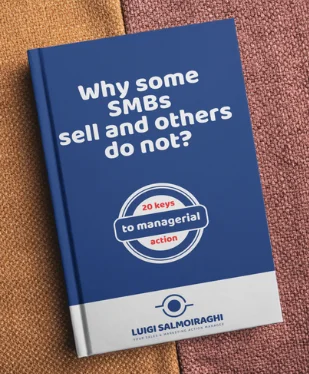

In the competitive world of B2B, achieving sales and marketing objectives can be an ongoing challenge, especially for SMEs looking to maximise their resources. Here are 20 common reasons why you might be falling short of your goals:
With a clear ICP, it is easier to focus on customers with the highest conversion potential.
Long, irrelevant messages need to capture the attention of potential customers.
A systematic sales process is the backbone of any successful sales strategy. It provides a clear roadmap for your team, making replicating and improving successful actions easier. By implementing a documented sales process, you can streamline your operations, improve efficiency, and increase your chances of success.
Errors in prospect segmentation can be costly. Contacting many companies without considering their suitability can result in losing time and resources. By paying careful attention to prospect segmentation, you can avoid these pitfalls and ensure that your efforts are focused on the most promising leads.
Without alignment between both teams, opportunities are lost or not taken advantage of.
The need for automated tools limits the reach and effectiveness of campaigns.
Failure to properly monitor key indicators leads to wrong decisions.
This often happens when prospecting for customers who are not ready to buy or are not a good fit.
It becomes irregular without consistent follow-up.
Not using the Eisenhower Matrix to prioritise leads to spending time on tasks that do not generate real impact.
Failure to rigorously follow up on leads results in missed opportunities.
In SMEs, it is common for one person to wear several roles, which can affect the effectiveness of the sales process.
The need for more helpful content on the blog or website limits traffic and customer interest.
It isn’t easy to adjust strategies to the needs of current and potential customers without listening to them.
The number of contacts made only sometimes results in qualified leads.
Relying only on an Outbound approach limits lead entry.
Without data analysis, valuable insights are lost to improve strategies.
Instead of adapting the proposal to the client’s needs, which can limit interest and conversion.
Not showing success stories or customer testimonials reduces trust in the company.
If your page is optimised for search engines, it is easier to attract organic traffic.
Do you want to improve your sales strategies and achieve your goals?
Download our guide on B2B sales strategies and get a free one-hour initial consultation to analyse how your SME can maximise its results.
In the competitive world of B2B, achieving sales and marketing objectives can be an ongoing challenge, especially for SMEs looking to maximise their resources. Here are 20 common reasons why you might be falling short of your goals:
With a clear ICP, it is easier to focus on customers with the highest conversion potential.
Long, irrelevant messages need to capture the attention of potential customers.
A systematic sales process is the backbone of any successful sales strategy. It provides a clear roadmap for your team, making replicating and improving successful actions easier. By implementing a documented sales process, you can streamline your operations, improve efficiency, and increase your chances of success.
Errors in prospect segmentation can be costly. Contacting many companies without considering their suitability can result in losing time and resources. By paying careful attention to prospect segmentation, you can avoid these pitfalls and ensure that your efforts are focused on the most promising leads.
Without alignment between both teams, opportunities are lost or not taken advantage of.
The need for automated tools limits the reach and effectiveness of campaigns.
Failure to properly monitor key indicators leads to wrong decisions.
This often happens when prospecting for customers who are not ready to buy or are not a good fit.
It becomes irregular without consistent follow-up.
Not using the Eisenhower Matrix to prioritise leads to spending time on tasks that do not generate real impact.
Failure to rigorously follow up on leads results in missed opportunities.
In SMEs, it is common for one person to wear several roles, which can affect the effectiveness of the sales process.
The need for more helpful content on the blog or website limits traffic and customer interest.
It isn’t easy to adjust strategies to the needs of current and potential customers without listening to them.
The number of contacts made only sometimes results in qualified leads.
Relying only on an Outbound approach limits lead entry.
Without data analysis, valuable insights are lost to improve strategies.
Instead of adapting the proposal to the client’s needs, which can limit interest and conversion.
Not showing success stories or customer testimonials reduces trust in the company.
If your page is optimised for search engines, it is easier to attract organic traffic.
Do you want to improve your sales strategies and achieve your goals?
Download our guide on B2B sales strategies and get a free one-hour initial consultation to analyse how your SME can maximise its results.



